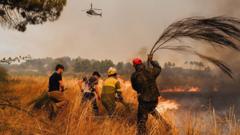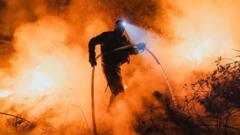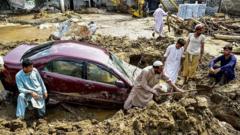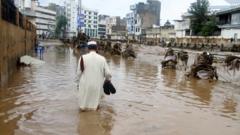The World Health Organization warns that the increasing frequency of heatwaves due to climate change poses significant health risks, particularly for construction and agricultural workers. They urge governments and employers to implement preventive strategies to protect workers from heat stress and associated productivity losses.
WHO Urges Enhanced Defenses Against Workplace Heat Stress Amid Climate Crisis
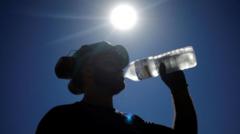
WHO Urges Enhanced Defenses Against Workplace Heat Stress Amid Climate Crisis
A new report highlights the growing risks of extreme heat for workers, calling for urgent adaptations in workplaces and schools worldwide.
The World Health Organization (WHO) has issued a stark warning regarding the escalating risk of extreme heat stress for workers worldwide as climate change leads to more severe heatwaves. A collaborative report with the World Meteorological Organization underscores the urgent need for enhanced protective measures for millions of employees, particularly in sectors such as construction and agriculture, that experience intense exposure to high temperatures.
This report marks the first comprehensive analysis on heat stress at work by the WHO since 1969, signaling a significant shift in focus towards the profound health implications of extreme heat. WHO's Director of Environment, Climate, and Health, Rüdiger Krech, described the findings as a critical wake-up call, stressing that rising temperatures not only lead to discomfort but present tangible health hazards like heat-related illnesses, including strokes and kidney failures.
Adaptation is essential, according to the findings. Over the last decade, the World Meteorological Organization indicates that we have witnessed the warmest temperatures on record, with predictions for 2024 to be the hottest yet. Recent data highlights that regions in Europe, Africa, and the Middle East routinely experience extreme temperatures exceeding 40°C (104°F) and, in some instances, reaching 50°C.
The report details that heatwaves negatively impact workplace productivity, estimating a 2% decrease for every degree rise above 20°C. This decline in output is paralleled by a surge in accidents, notably, during Europe’s 2023 heatwave where Switzerland recorded a 7% increase in workplace incidents when temperatures surpassed 30°C. Stress, overheating, and sleep deprivation were cited as the main contributors to these accidents.
Some European nations are proactively responding to mitigate these risks. Italy's recent emergency decree prohibits work during peak heat hours, while Swiss cantons like Geneva and Ticino halted construction during extreme heat. Unia, Switzerland's prominent trade union, endorsed this pause, emphasizing the need for construction companies to prioritize worker safety over strict deadlines.
Though the report centers on workplace conditions, it extends its concern to vulnerable populations, including the elderly, chronically ill, and young individuals, stressing that schools must also adapt. Traditionally, German schools could declare "Hitzefrei" when temperatures rose excessively; however, since such heat levels have become frequent, schools are hesitant to disrupt classes. In response to the WHO's recommendations, educators in Switzerland have been encouraged to consider physical environments conducive to learning, proposing renovations such as improved ventilation systems.
Furthermore, Krech posits that even aspects like school uniforms should be scrutinized for their suitability in hotter temperatures. However, adapting infrastructures to combat the heat will inevitably require financial investments, and with governments increasingly redirecting funds towards defense spending, climate adaptation measures are at risk of being sidelined. Krech warns that overlooking this could lead to costly consequences from reduced productivity and adverse health effects on workers, urging a reevaluation of budget priorities as global temperatures continue to rise.
As this climate crisis unfolds, the call for coordinated efforts among governments, educators, and health authorities becomes more urgent than ever to ensure the safety and well-being of workers and the broader community in the face of intensifying heatwaves.






